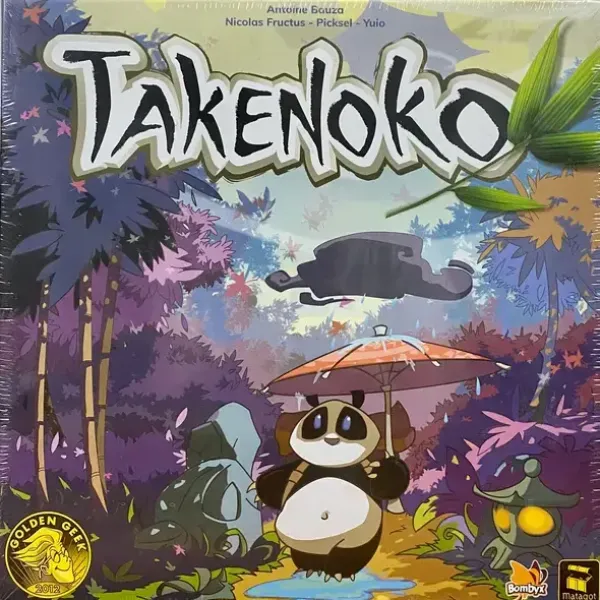
Exploring Takenoko: A Strategy Guide for Austin's Board Game Enthusiasts
Takenoko has charmed its way into the hearts of Austin board game circles with its engaging blend of strategy, aesthetics, and playful competition. Set against a backdrop that’s as rich in story as it is in color, this game invites players to the imperial gardens of ancient Japan, where they are tasked with the care of a giant panda by the decree of the Emperor himself. This guide delves into the lore, rules, optimal player count, and strategies for excelling in Takenoko, making it a staple among Austin tabletop games.
The Lore and Background Story of Austin Boardgame Takenoko
The Emperor of Japan has received a giant panda, a gift of peace from the Emperor of China, and now requires the players, acting as his court members, to care for the panda. Each player tends the bamboo garden, planting and irrigating plots to grow bamboo, all the while feeding the whimsical panda that roams the garden eating the bamboo. The story sets a serene stage for a game that’s all about balance and growth, reflecting themes of harmony and responsibility.
Understanding the Rules of Austin Boardgame Takenoko
Takenoko is a game for 2 to 4 players and involves tile placement, garden management, and panda feeding. Here’s a brief rundown of the gameplay mechanics:
Tile Placement: Players draw land plots and place them on the table, expanding the garden. Each plot can grow one of three colors of bamboo.
Irrigation: Bamboo only grows on irrigated plots. Players add irrigation channels to water the plots, enabling bamboo to grow.
Bamboo Growth: Players can perform actions to grow bamboo on irrigated plots, increasing the bamboo stalks that the panda can eat.
Panda Movement: The panda moves around the garden, eating bamboo. Every time the panda eats, the player keeps a bamboo section, which counts for certain objectives.
Objective Cards: Players draw objective cards that can be completed for points. These cards include gardener objectives (growing certain configurations of bamboo), panda objectives (eating specific sets of bamboo), and plot objectives (arranging the garden plots in specific patterns).
Optimal Number of Players for Austin Boardgame Takenoko
Takenoko is best enjoyed with 2 to 4 players. With two players, the game is more strategic and controlled, while with three or four players, it becomes dynamically competitive and slightly less predictable. Each game typically lasts about 45 minutes, making it ideal for an engaging yet not overly lengthy gaming session.
Strategies for Playing Austin Boardgame Takenoko
Balance Your Objectives: Always balance between completing your current objectives and preparing for new ones. Keep a mix of gardener, panda, and plot objectives to maximize your scoring opportunities.
Efficient Actions: Plan your actions per turn to make the most out of them. Try to align your gardener and panda actions to fulfill multiple objectives simultaneously.
Watch Your Opponents: Pay attention to the objectives your opponents seem to be pursuing and adjust your strategy accordingly. You might block their panda path or build away from their plot configurations.
Irrigation Is Key: Focus on irrigation early in the game. An irrigated garden gives you more flexibility for bamboo growth, helping you complete gardener objectives faster.
Flexible Plot Placement: Be strategic about where you place plots. Try to fulfill your plot objectives while keeping options open for new tiles that could benefit your future turns.
Securing Victory in the Gardens of Austin Tabletop Game Takenoko
Whether you’re a seasoned strategist or a casual player, Takenoko offers a delightful challenge with its unique blend of planning and unpredictability. It’s a testament to the rich diversity of Austin tabletop games, providing not only a competitive experience but also a visually and thematically enjoyable one. As you cultivate your garden and tend to your panda, remember that each game is an opportunity to refine your strategy and enjoy the peaceful yet competitive spirit of Takenoko.